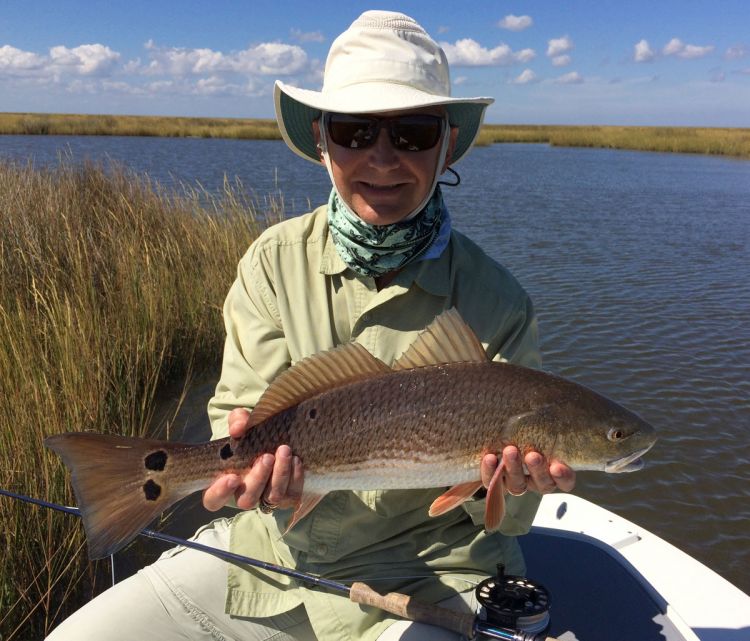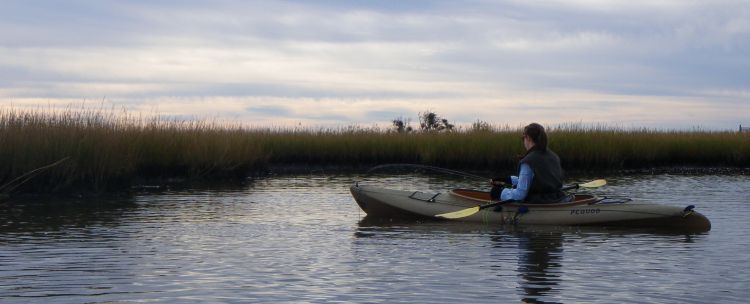 The coast provides many presents
The coast provides many presents
I love those Hallmark Christmas movies, but they’re getting stale. Same old romantic plot.
Here’s an idea they should consider: The story involves a day spent fly fishing for speckled trout and redfish with friends, and gathering afterwards for some hearty po-boys.
I’m sure the network will like my idea, even if it’s light on Christmas theme. Besides, it really happened.
Twas the week before Christmas. I had an offer from my buddy Mike LaFleur to join him and Roger del Rio on a trip to Fourchon. Mike said the snaggled-tooths were holed up in one of his favorite spots.
I was a bit apprehensive. Anytime Roger is joining us on a fishing trip, we check the weather forecast.
There’s a reason his nickname is “Fishes With Wind.”
But on this gorgeous morning there was hardly a ripple on the water. We launched our kayaks at sunrise. After paddling 100 yards to a cut, I noticed small baitfish nervously skipping across the water.
I tied on a green foil pencil popper. These are shaped from balsa wood and, with the help of wood glue, covered with colored foil as used in candy wrappers. Eyes are painted or attached, and then the fly is covered with 2-ton epoxy.
While a pencil popper hardly “pops,” it makes an erratic action on the water not unlike a Zara Spook lure.
Several nice trout attacked the popper, some going acrobatic in the process. Often the fish would strike two or three times before taking the hook — and sometimes never finding the hook at all.
This is what I love about topwater trout fishing. It’s not about the numbers; it’s all about the show.
As the sun rose in the sky, the action ceased. I paddled back to join Mike, who was anchored on the bend of a canal.
One of Mike’s favorite flies this time of year is the LSU Clouser (yellow body and purple overbody). He fishes it on an clear, intermediate sinking fly line.
Unlike a full sinking line, an intermediate line sinks slowly, allowing the fly to stay close to the bottom without dragging the bottom.
Duplicating what Mike was doing, I managed a few more nice keeper trout. He was hooking up less often but pulling in bigger fish — mostly 18 to 20 inches.
Meanwhile, Roger was starting to catch a few nice trout, and that meant the wind would soon be howling.
I really wanted to get into the poisson rouge before the wind picked up.
Winter in the marsh means low water and, on calm days, clear water. A perfect scenario for sightcasting.
It was now after 10 o’clock. The sun was in the right position to spot fish. Immediately, I recognized one with distinctive bars feeding along a shoreline.
While sheepshead on the fly is always a challenge, in winter the goats will readily eat a spoon fly as long as the cast is perfect and the retrieve very slow.
I also find sheeps aren’t likely to eat if they are just sitting still.
But find one that’s moving slowly, actively feeding, and you’ve got a winner.
This particular goat fit the criteria. I put the spoon fly several inches in front of it, waited for it to arrive at that spot and began the strip.
What I saw was a wake following my fly for a couple feet, and then I felt a tightness to my line — and I set the hook.
The fight was on.

As an instructor, I tell folks all the time to keep the tip of the fly rod on the water when retrieving a fly. That eliminates any slack — allowing you to feel the strike and set the hook properly into tough-mouthed species.
All I needed to complete my Christmas trip wish list was to catch a red. It wasn’t long before I had my opportunity.
This time the fly of choice was a red/orange Seaducer, which has great action and high visibility.
Perhaps too much adrenaline, but I sent the fly sailing over the red and spooked it. Even so, I continued to strip it in.
Good thing I did, because there was another unseen red that bolted to the fly.
December redfish have that cool-water vigor. This fish was only 25 inches long, but it fought for several minutes and pulled out all my fly line before finally being subdued.
It was now just after 1 p.m., and Mike and Roger had paddled back to our launch spot. I soon joined them, and we loaded up and headed off to get po-boys before going home.
Spending a beautiful day in the marsh with good friends, catching fish on flies we had tied and ending the day with overstuffed po-boys — these are the joys of Christmas for every fly angler.


